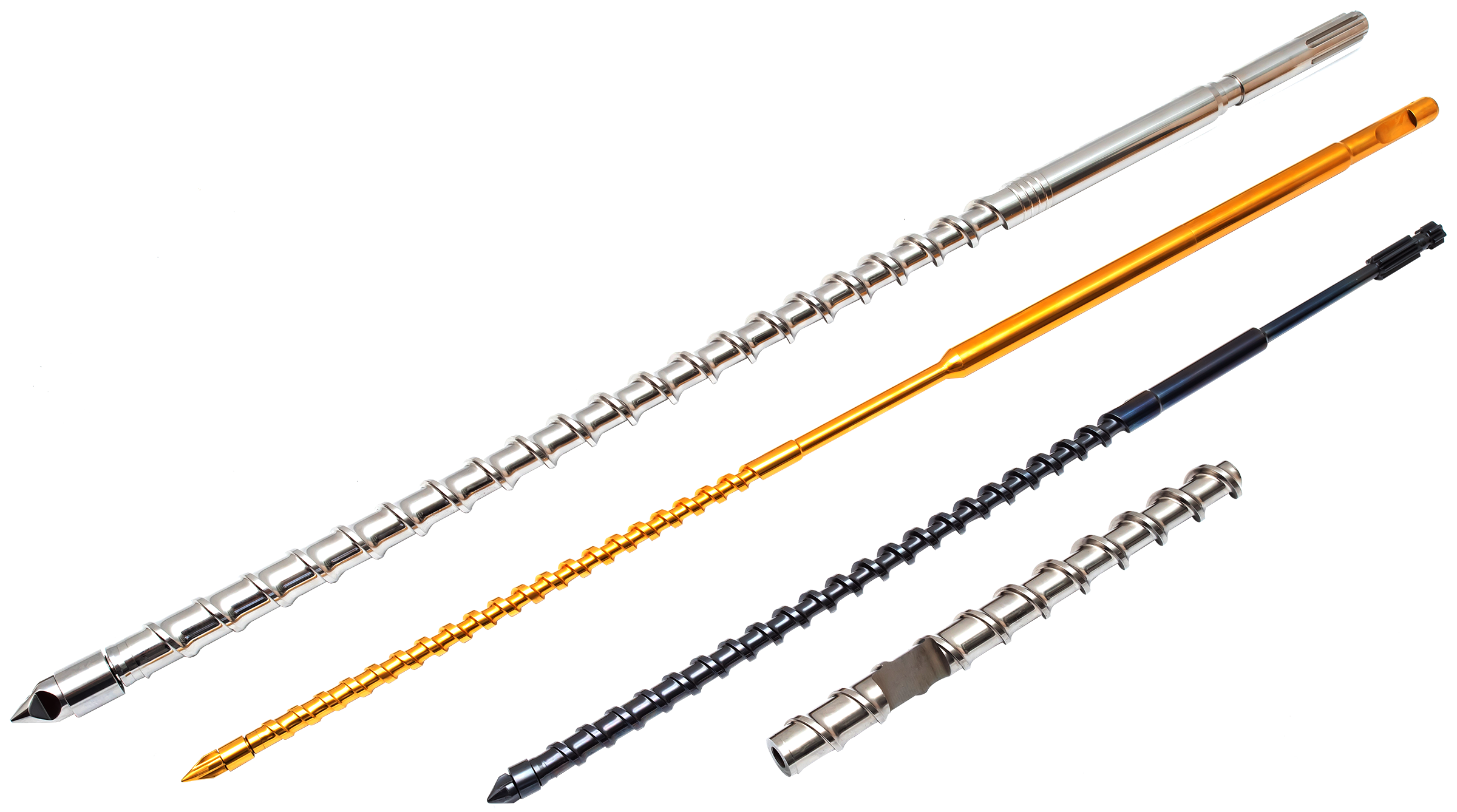We provide custom solutions to all our customers and offer complete technical advices that your company can take advantage of.
The screw length and injection stroke are two critical parameters of injection molding machines that have a significant impact on the quality and efficiency of the molding process.
The screw length in an injection molding machine is defined as the length of the screw flights, while the injection stroke refers to the distance the injection carriage travels during the injection process. These two parameters are interrelated and influence the following aspects of the molding process:
Melt temperature uniformity: A longer screw length allows for more mixing and homogenization of the molten plastic, resulting in a more uniform temperature distribution. This is particularly important for high-viscosity materials and products with tight dimensional tolerances.
Injection pressure: A longer screw length and a shorter injection stroke generate higher injection pressure, which is essential for filling complex molds with thick walls.
Injection speed: A shorter screw length and a longer injection stroke enable faster injection speeds, suitable for thin-walled products and applications where cycle time is critical.
The choice of screw length and injection stroke depends on various factors, including:
Material properties: High-viscosity materials require longer screws and higher injection pressures, while low-viscosity materials may benefit from shorter screws and faster injection speeds.
Product geometry: Complex products with thick walls necessitate higher injection pressure, achievable with a longer screw length and a shorter injection stroke.
Production requirements: High-volume production may prioritize shorter cycle times, facilitated by a shorter screw length and a longer injection stroke.
Industry standards:
The injection molding industry generally offers three types of screws, designated as A, B, and C, with different diameters and length-to-diameter ratios (L/D):
A-screws: Small diameter, high L/D (22-25), suitable for high-viscosity materials like PC, PMMA, and flame-retardant ABS.
B-screws: Medium diameter, medium L/D (20-22), suitable for general-purpose materials like PS, PP, and PE.
C-screws: Large diameter, low L/D (18-20), suitable for low-viscosity materials like PVC, PET, and PBT.
Screw Barrel selection
1. PA6/66/46/6T special screw
It has large compression ratio, precise backstop, good color mixing effect, stable feed volume, high plasticizing efficiency and good exhaust effect.
Generally, the middle or large-diameter screw is used for processing. It is effective in molding crystalline low-viscosity plastics such as PA, PP, and TPE. It can also mold general plastics.
2. PC/ABS special screw
The high-alloy steel is fully hardened and can effectively withstand high torque, high pressure impact and wear resistance. The surface is electroplated or nitrided to increase its corrosion resistance. It is smooth and pore-free to reduce surface adhesion and degradation. The detailed structure is polished. Polishing treatment can effectively prevent the retention effect, while the low-shear design generates little heat.
Generally, small and medium diameter screws are used, so this screw is easy to use when molding raw materials such as PC, ABS PC, PP-R, and flame-retardant ABS.
Choose a large aspect ratio. The feeding section is long, the homogenizing section is short, and the compression ratio is moderate.
3. PMMA special screw
High alloy steel is used for full hardening treatment, which can effectively withstand high torque and high pressure impact. The surface is electroplated or hard chromium plated to reduce surface adhesion and degradation. The plasticization requires uniformity and good effect, and the color mixing must be good. At the same time, low shear must be used. Designed to lower temperatures and prevent raw material degradation.
The diameter of the screw is generally selected as the middle diameter, but if you want to mold PMMA, PP-R, PC, ABS and other materials that have color mixing requirements, you can also use it.
| Type | Characteristics | Suitable Materials | Typical Applications |
|---|---|---|---|
| A-type | General purpose | Most plastic materials | Products with simple shapes and uniform wall thickness |
| B-type | High shear | High viscosity, high melt index materials | Products with high strength and high rigidity |
| C-type | Low shear | Low viscosity, low melt index materials | Transparent, optical products |

